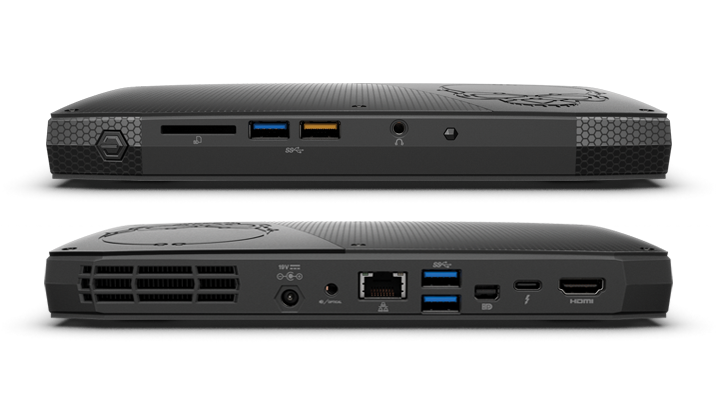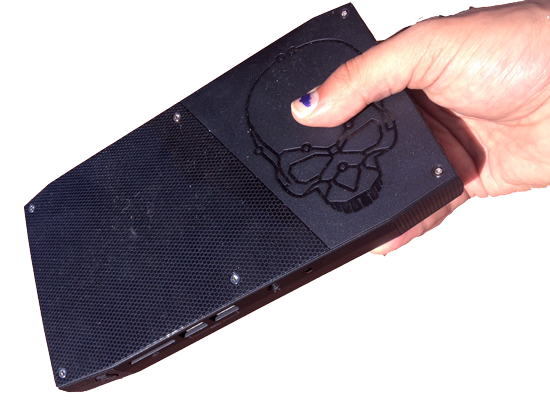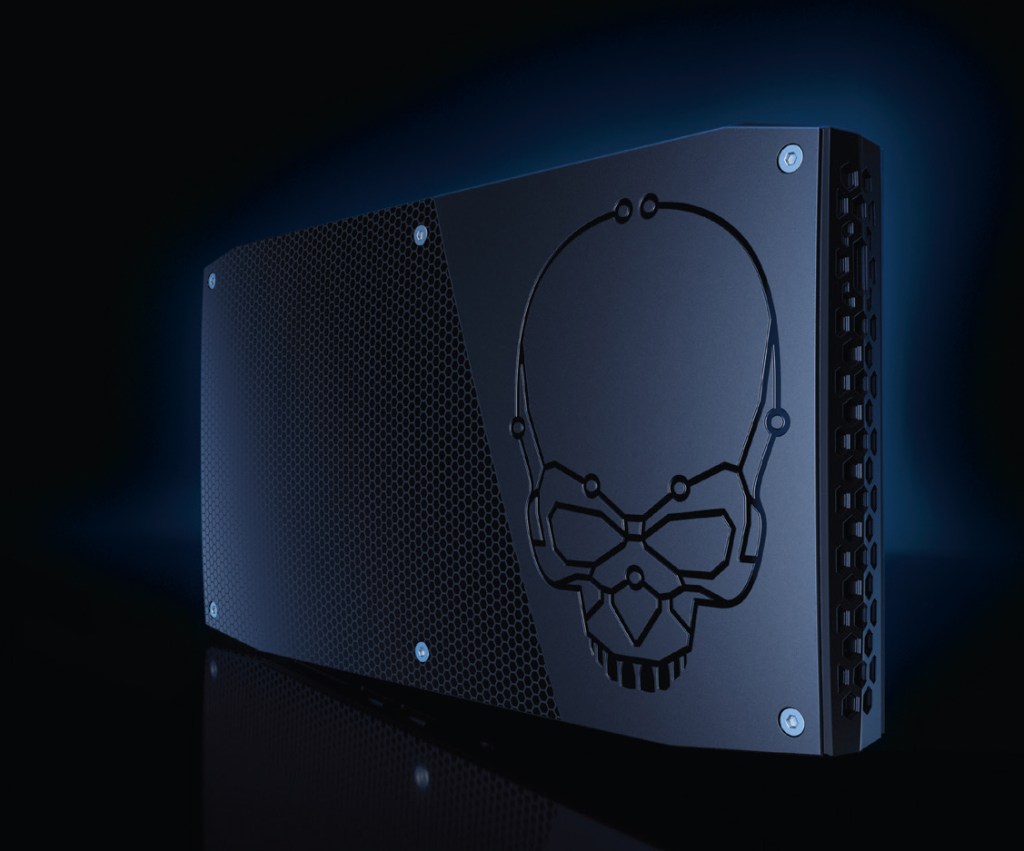A Piece-by-Piece Gaming Rig
Code named Skull Canyon, Intel's NUC6i7K7 is marketing itself with the catchphrase "Change the Game." A friend I had over saw the box the NUC came in while I was reviewing the Intel-powered mini-computer, and pronounced the name like one of the Three Stooges: "Nyuk-nyuk-nyuk!" [It's pronounced "nuke" by Intel execs.] As a gaming machine, the NUC is actually like one of those Stooges, if they didn't have the others to play off of… or torment. It's a great little piece of hardware, but it's also a bare-bones device that needs additional purchases to make it workable as a gaming rig.
Powered by a 6th-generation Intel i7 quad-core processor in a box that looks like a mid-sized external hard drive, the NUC is a tiny beast on a CPU level. It's made to be picked up and dropped into a bag to be later connected to any monitor by Thunderbolt, Mini Display, or HDMI connection (I connected it to my television for the diagnostic) along with 4 USB ports, with one providing dedicated power, and a WiFi and Bluetooth connection for keyboards, mice, etc.
What it doesn't come with, at baseline, is an operating system, hard drive, or anything more than the minimum RAM (4 slots, up to 32GB DDR4). Provided for the review was a 512GB internal hard drive—with two M.2 SSD slots available—and 16GB of RAM. Like the production unit, an OS had to be acquired separately (which Intel thankfully provided on discovering I didn't have an extra OS key). However, that easily pushes the $600 starting cost start to approach that of a regular mid-range home-built tower, without discussing graphics options.

The biggest problem for the NUC as a game-playing device is that it lacks a dedicated graphics card, relying on the CPU's integrated Intel Iris Pro Graphics 580, which can output less powerful apps to 4K and handle video processing, but isn't enough for modern gaming. This is by design, since it's meant to be paired with the upcoming Razer Core GPU enclosure—which is a separate tower just to house graphics cards for devices like the NUC and Razer gaming laptops—where the operations are bussed through the Thunderbolt connection. Without the Core—which is an additional $500 investment not including the cost of the graphics card it will house—the NUC isn't much of a gaming machine, though it can play anything a few-years old without too many problems.
Amazingly, I found that it could actually play The Witcher 3 on the lowest possible settings with everything turned off, though the framerate visibly dipped into the low twenties. Fallout 4 faired less well; it could start the game, but on leaving the character selection tutorial, every surface became a expansion of infinite planes that extended into the distance, colliding at hard angles that looked like the trippy fifth-dimension part of the movie Interstellar. Technically, you could play it, you just can't see what was happening at all as you bounce from one infinite plane to another.
Visually, the NUC looks a little like an old USB splitter with a cool skull face plate on top of it, which can be swapped out for a plain cover provided with the device. It also comes with a mount, so that it can be attached directly to the back of a monitor or television for ease of storage, making it ideal for productivity solutions for businesses that don't require much graphics power and need to conserve space. I've considered purchasing a portable HDMI monitor to turn this into my on-the-go workstation, since my laptop is getting old, and it has more than enough power to run the work-related apps I need.&

I took this photo to show scale—it is very portable.
As a portable productivity PC, I found the NUC Skull Canyon to be great, as long as I wasn't using any graphics-heavy apps—and was great for indie-gaming titles. It's an interesting idea, a system where you buy what are normally internal components as separate devices. You could make the case for a modular design where everything could be more easily swapped out piece-by-piece without having to bother with digging around inside a tower. However, at present, the cost of all of the required components doesn't make up for the convenience of the design.
If you want a small, portable, powerful device as a work solution anywhere you know there'll be an HDMI connection, you could do a lot worse. For gaming, though, it's hard for me to see the advantages it has over a dedicated gaming laptop when the cost is ultimately the same—or more—after buying all the peripheral devices needed to really make it work.











